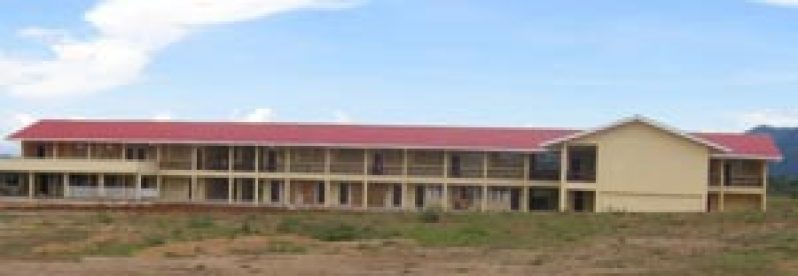FOR many years, descendants of Amerindians, the first people of this land, were exploited and marginalised. During the colonial era, the neglect was almost absolute, and it was only through the benevolence of the church, that some areas benefited from basic education.
 This situation changed with the advent of the PPP Administration, which, during the period 1957 to 1964, expanded education opportunities in the hinterland and introduced basic health services. But such development was short-lived, as in 1964, with the aid of the British, the PPP was unable to form a government due to the PNC/ TUF coalition.
This situation changed with the advent of the PPP Administration, which, during the period 1957 to 1964, expanded education opportunities in the hinterland and introduced basic health services. But such development was short-lived, as in 1964, with the aid of the British, the PPP was unable to form a government due to the PNC/ TUF coalition.
It wasn’t until 1992, when the PPP/C Government took office, that renewed attention began to be paid to Amerindians, and today they can boast of development in all spheres of their personal and community life, since the party, in pursuit of its policy of ensuring equal opportunity for all Guyanese, implemented in the past two decades several policies and programmes which have profoundly changed the state of affairs for Amerindians.
Education transformation
Government’s hinterland education focus has resulted in Amerindians being better empowered to serve and develop their communities and the country.
Hundreds of schools, primary and nursery, were built to cater for easy access to the fast rising Amerindian population. Thirteen schools, outfitted with dormitories were constructed, and are delivering secondary education to Amerindian students. These schools are in Santa Rosa, Port Kaituma and Mabaruma in Region 1, Anna Regina Multilateral Region 2, St Cuthbert’s Mission Region 4, 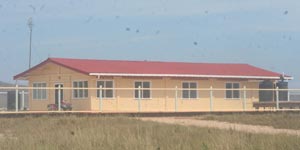 Waramadong and Four Miles Region 7, Mahdia and Parmakatoi in Region 8, Aishalton, Annai, St Ignatius and most recently Sand Creek in Region 9.
Waramadong and Four Miles Region 7, Mahdia and Parmakatoi in Region 8, Aishalton, Annai, St Ignatius and most recently Sand Creek in Region 9.
Soon a huge modern secondary school will be built at Kato in Region 8 that will cater for another 350 students.
The introduction of the National School Feeding and Uniform Assistance programmes also significantly reduced the gap of education delivery that existed between schools on the coast and those in the hinterland. These two programmes significantly increased school performance and attendance.
Annually, over 100 primary schools in Regions 1, 8 and 9 benefit from the provision daily of a hot meal, under the School Feeding Programme and about 30,000 from rural, riverine and hinterland areas benefit from the School Uniform Programme.
In the case of the uniform assistance, school uniform material is distributed to Amerindian communities and sewing groups there are paid to sew the outfits.
Amerindian students who excel at the level of the Caribbean Secondary Education Certificate (CSEC) are now afforded the opportunity to pursue higher education. The introduction of the Hinterland Scholarship Programme has provided many Amerindian students with the opportunity to study at secondary, technical and tertiary levels in their region and in Georgetown. Close to $100M was spent on a dormitory constructed at Liliendaal and provides housing for these scholarship 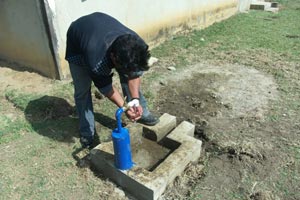 students who are pursing studies on the coast.
students who are pursing studies on the coast.
Amerindian students also benefit from scholarships to pursue studies in several fields abroad and at the University of Guyana, in addition to obtaining training at the Cyril Potter College of Education through the college and its satellite centres in the hinterland. Training in the medical field is also covered under the opportunities afforded by the health ministry.
These special programmes have thus far resulted in many trained nurses, doctors and teachers, who return to serve their communities.
Skills-based training
Skills-based training was also opened up to Amerindians who are given the opportunity to access such training through the Kuru Kuru Training Centre. Recently, a major skills-based initiative targeting Amerindian youths was launched, the Youth Apprenticeship and Entrepreneurial programme (YAEP). It targets the creation of employment and entrepreneurial opportunities for the youths. The goal is to build their capacity for community support and participation.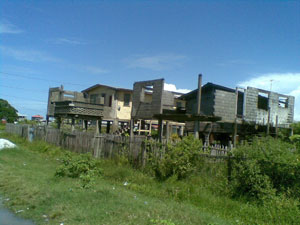
Healthcare
Meanwhile, the quality of health care services provided to Amerindians has significantly improved, and today communities in Regions 1, 7, 8 and 9 boast health posts, centres and regional hospitals, which  cater for the needs of their residents.
cater for the needs of their residents.
There are hospitals in Lethem, Kamarang, Matthews Ridge, Port Kaituma, Moruca, Kumaka, Kato, Mabaruma and Bartica. Trained personnel to man these facilities are covered under the extensive and continuous training programmes provided through the Ministry of Health and through the scholarship programme.
An Amerindian Hostel was constructed in Georgetown to provide accommodation for Amerindians who are referred to Georgetown by various health facilities in the hinterland.
Water access improved
Successfully increasing as well is access to potable water. Where before 1992 there was little or no access to this vital service in the hinterland but today more than 75 percent of the hinterland population has access to potable water. Government established in 2006, the Hinterland Water Strategy and since then it has spent more than $900M to ensure the development of water services in these communities. There are stand pipes, hand pumps, bore holes, solar powered wells and trestles with black tanks to provide pure water.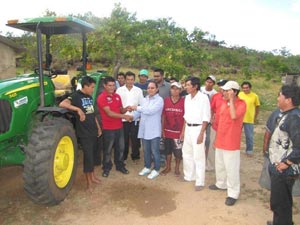
Housing drive
Not to be left out of the housing boom, Amerindian communities are also being catered for. At Bartica, Region 7, for instance, hundreds of lots have been given out to residents, while many Region 1 residents will benefit from core homes.
Already eight families from Manawarin received keys to their new homes as part of the Housing Ministry’s Hinterland Housing Pilot project that is being implemented under the second Low Income Settlement Programme (LIS-2). Residents in Mahdia, Region 8, have benefitted from house lots in a new housing area, while in Region 9, at Tabatinga, over 200 residents have benefitted.
Income generating initiatives
Government also affirmed its focus on the expansion of the economies of Amerindian communities with substantive investment in programmes that would stimulate village development and sustainable livelihoods.
One major income generating initiative is the Presidential Grant Programme that was introduced in 2007, and provides Amerindian villages with financial assistance to aid village development. The grant has helped to improve village life through the creation of employment for villagers and improved access and mobility through the purchase of vehicles.
There is the Secure Livelihood Programme that was piloted in Region 1 and targets areas such as agriculture, and aquaculture. Central to this project are the creation of employment opportunities, sustaining food security, income generation, wealth creation, economic diversification and secure livelihoods.
Just recently, government started implementing a new initiative, the Community Development Project (CDP,) aimed at developing Amerindian communities through the development of environment-friendly economic activities. It targets disbursement of $5M each to 180 villages as funding for an economic-based project. It is based on the principles and thrust of the Low Carbon Development Strategy (LCDS), which seeks to transform the economy while combating climate change.
Hinterland Electrification
The provision of sustainable electricity to Amerindian communities is being addressed under the Hinterland Electrification Programme. About 11,000 complete solar panel systems have been distributed.
Meanwhile, Amerindian and riverine communities are also targeted for the distribution of solar panels with emphasis on schools and health institutions, under the capital budget of several ministries.
Transportation and accessibility
Other annual investments that have brought continuous improvement to the lives of Amerindians include the investment to sustain and improve roads, bridges and airstrips. Upgrading the main road networks in Amerindian communities has provided tremendously easier access to markets and transportation for emergencies and the delivery for goods and services across several areas in Regions 1, 7, 8 and 9.
With regard to transportation, communities are provided with All Terrain Vehicles (ATVs), outboard engines and boats, and tractors and trailers to facilitate transportation, access to farms and to transport their produce to market.
Land titling, demarcation
Amerindian land issue has been a priority and today they own a sizeable portion of the country because government has made significant progress in addressing their land claims, and titling of communities.
The sum of $77.9M was budgeted this year for the Land Titling and Demarcation Programme.
Amerindian Land Titling and Demarcation activities are to be funded through the Guyana REDD+ Investment Fund (GRIF); and over the period 2011 to 2014, a total of US$12M is expected to be spent on the process. To date 104 Amerindian communities have been titled.



.jpg)




